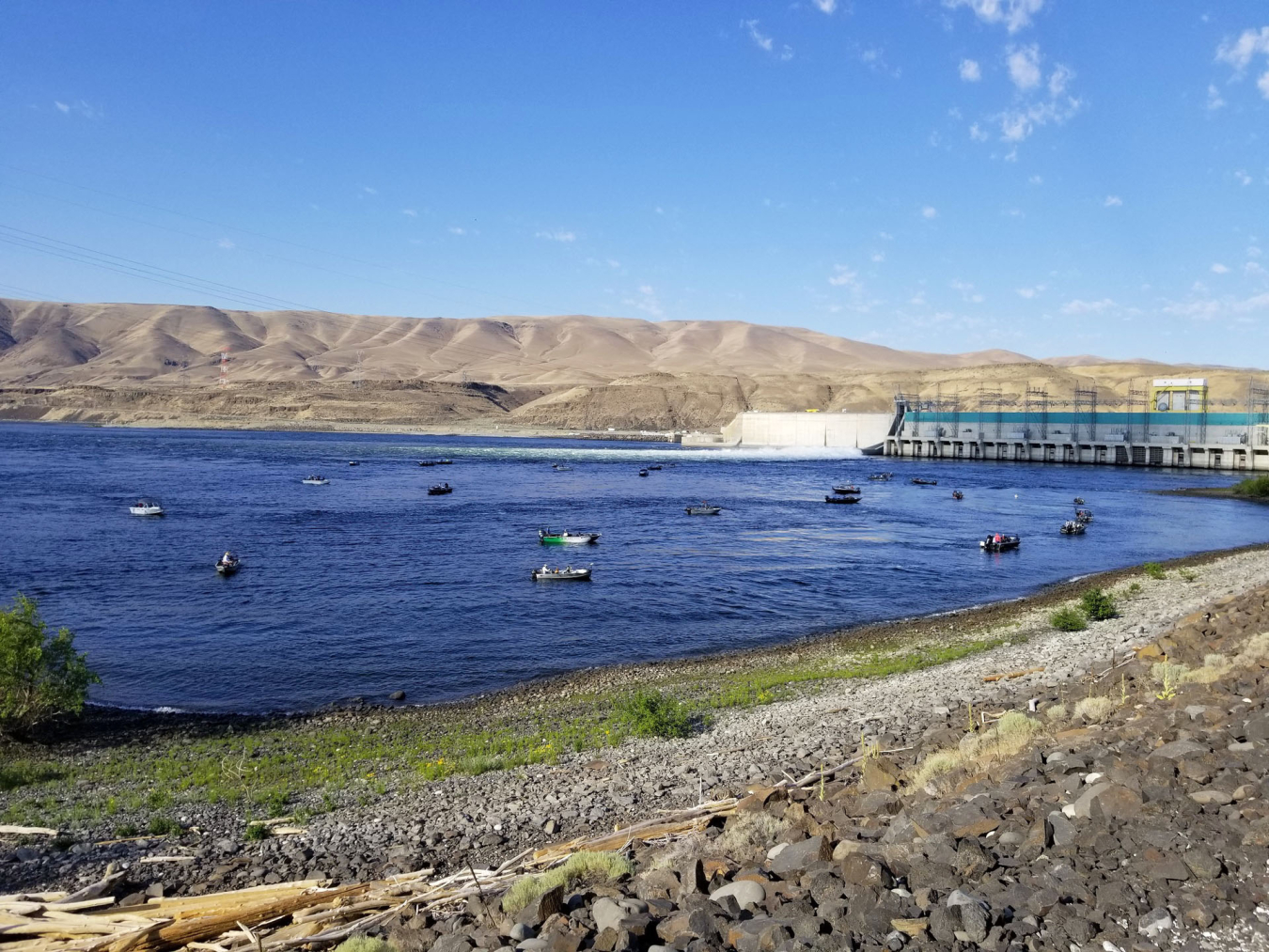Hydropower offers surrounding communities several non-power benefits including food security, flood protection, water quality, jobs and recreation.
Office of Critical Minerals and Energy Innovation
December 10, 2020
Hydropower is the United States’ oldest source of renewable electricity, comprising nearly 7% of U.S. generation and providing important reliability and flexibility services to our grid. Additionally, pumped storage hydropower currently supplies roughly 95% of our nation’s utility-scale energy storage. But what exactly are hydropower and pumped storage and how do they benefit us?
Hydropower, also referred to as hydroelectric power, is electricity produced from generators driven by turbines that spin from falling or fast-flowing water; these technologies convert water’s kinetic energy into mechanical energy and then into electricity. Pumped storage hydropower has the added capability of reusing fallen water, which has already been used to create electricity, and pumping this water back up to a higher reservoir for storage until it is needed to meet power demand.
We generally think of hydropower as a source of electricity generation and storage, but these facilities also provide several other benefits. Here are six non-power benefits that hydropower has to offer:
- Food Security. As a reliable source of water for irrigation, hydropower facilities support food production activities. According to the U.S. Army Corps of Engineers’ National Database of Dams, at least 276 dams in the U.S. provide both hydropower and irrigation services. Our Water Power Technologies Office’s Irrigation Modernization project is exploring ways to accelerate the modernization of irrigation infrastructure across the western United States and help capture additional value from these systems.
- Water Quality, Quantity, and Timing. The increased control of water that is enabled by hydropower offers an opportunity to improve water quality through targeted releases to deliver improved environmental flows and temperature for the health of aquatic species.
- High Paying Jobs. The hydropower workforce is expected to grow and evolve toward a more digitalized future. And based on retirements alone, the industry is projected to need thousands of new workers over the next decade—offering many high-wage jobs across the country.
- Flood Protection. Many dams provide flood control by capturing floodwaters and then releasing them under controlled circumstances to the river below. In the case of pumped storage, the excess water can be stored and released when power is needed—avoiding a potential disaster while creating a net benefit for energy storage.
- Recreation and Tourism. Most hydropower installations offer access to the reservoir, allowing the public to take full advantage of opportunities for recreational activities such as—fishing, swimming, and boating. River releases provide opportunities for kayaking and white water rafting. And, many of our nation’s largest hydropower facilities are a draw for tourists. For instance, the Hoover Dam, crossing the Arizona-Nevada border about 30 miles southeast of Las Vegas, is the most-visited dam in the world, with nearly 7 million tourists visiting each year.
- Savings for Consumers. Did you know that globally, hydropower remains the cheapest form of electricity? That’s why some U.S. states with a high percentage of hydropower generation, such as Washington, Oregon, and Idaho can boast about having some of the lowest electricity rates in the country on an annual basis.
The United States has roughly 80,000 dams, and many were developed primarily to provide one of the benefits above. Hydropower, while only representing 3% of U.S. dams, often provides these same societal benefits while also creating power. Hydro’s non-power benefits are sometimes under-reported, and operators face challenges assessing how to optimize these facilities to maximize the different benefits. Hydropower sits at the intersection of the nation’s water and energy systems, and communities look to it for reliable and affordable services. The Water Power Technologies Office continually investigates new technologies that can help deliver more of these non-power benefits from hydropower.
More by this author
-
Former Assistant Secretary for the Office of Energy Efficiency and Renewable Energy

